Thailand Travel Guide: All The Best Places To Go (2022 Update) • Indie Traveller
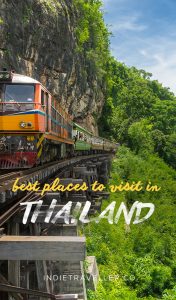
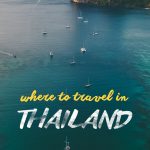
Thailand is one of the world’s top travel destinations, famed for its tropical beaches, exquisite cuisine, and golden temples.
While the pandemic resulted in its borders being closed for 18 months, Thailand is now open to (vaccinated) tourists again, giving you the perfect chance to visit the Land of a Thousand Smiles once again.
But different parts of Thailand appeal to different crowds — from wide-eyed adventurers at the start of a Thailand backpacking trip to package tourists on a lazy beach holiday.
That means to get the experience you’re looking for you have to know where to go!
Mục Lục
Where to go in Thailand
In a hurry? Need some quick answers?
Depending on your interests, here are some of the best places to go in Thailand:
Best for culture, history and temples
Chiang Mai, Sukhothai, Ayutthaya
Popular vacation spots (resorts and beaches)
Phuket, Pattaya, Koh Samui. Many excellent resorts here, though less interesting if you’re a backpacker or independent traveller.
Top nature experiences in Thailand
Khao Sok National Park, trekking in northern Thailand, Erawan National Park, Khao Yai National Park
Best spots for partying
Bangkok, Koh Phangan, Pai, Koh Phi Phi, Koh Chang (Lonely Beach). All of these have a party scene and attract younger travelers, though the bars are also easy to avoid if you prefer some quiet time.
Calm or less touristy places in Thailand
Try the Mae Hong Son region, Chiang Dao, Kanchanaburi, Koh Lanta, or the Koh Chang archipelago.
Thailand itineraries
If it’s your first time in Thailand, then you might enjoy some of the more established travel routes that are sure to give you a great experience.
For a quick 1-week loop focused on culture and nature, consider doing Bangkok, Kanchanaburi, Ayutthaya, and Khao Yai National Park. Since these are all close to each other, you won’t waste too much time in transit.
Alternatively, you can do a 1-week cultural loop in northern Thailand, starting in Chiang Mai.
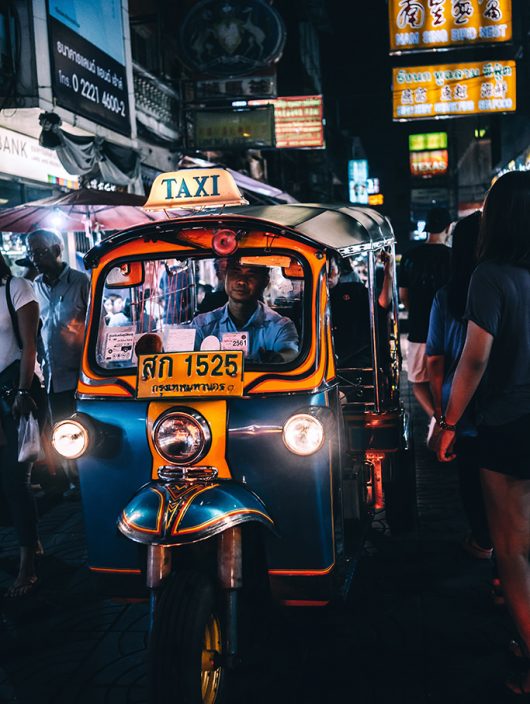
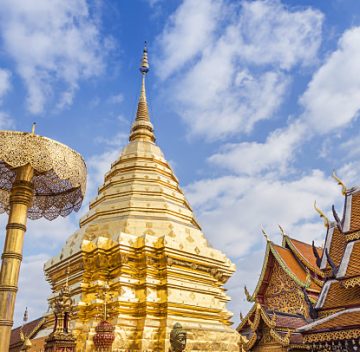
For some ideas for a longer route, you can check out this Thailand itinerary for 2 to 4 weeks, which includes the cultural north and islands in the south.
When creating your route, it’s often a good idea to go to the north first.
You will find more cultural and natural attractions there, so many people think it’s nice to tick these off the list before heading to the southern coast.
If you go to the beaches straight away, you might just get stuck in a hammock and not do anything else!
Top places to visit in Thailand
Even though the best places to visit in Thailand will always depend on your personal interest and travel style, many travelers would agree the following are all among the highlights in Thailand.
Central Thailand
You are likely to arrive in the capital Bangkok, which is located smack in the middle of central Thailand. Besides the capital, it’s worth highlighting the archaeological site of Ayutthaya, and the gentle riverside town of Kanchanaburi makes for an easy escape from buzzing Bangkok.
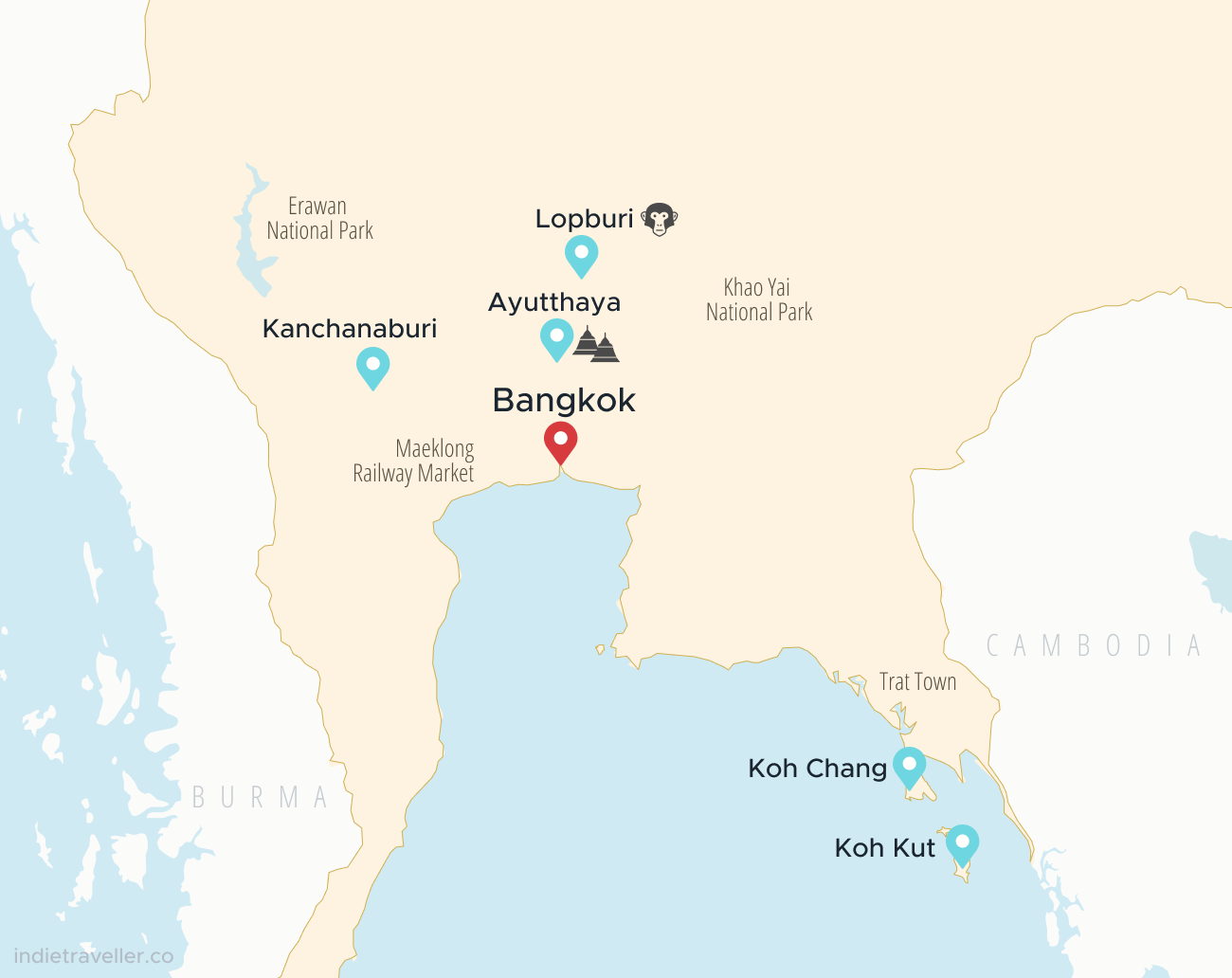
Bangkok
Enjoy the hustle-and-bustle of the Thai capital
Some tourists arrive in Bangkok believing it to be way too chaotic, busy, or stressful, immediately escaping straight to the islands. I think this is a real shame because Bangkok is an amazing city to explore!
With so many things to do in Bangkok, you could easily spend several days in the capital.
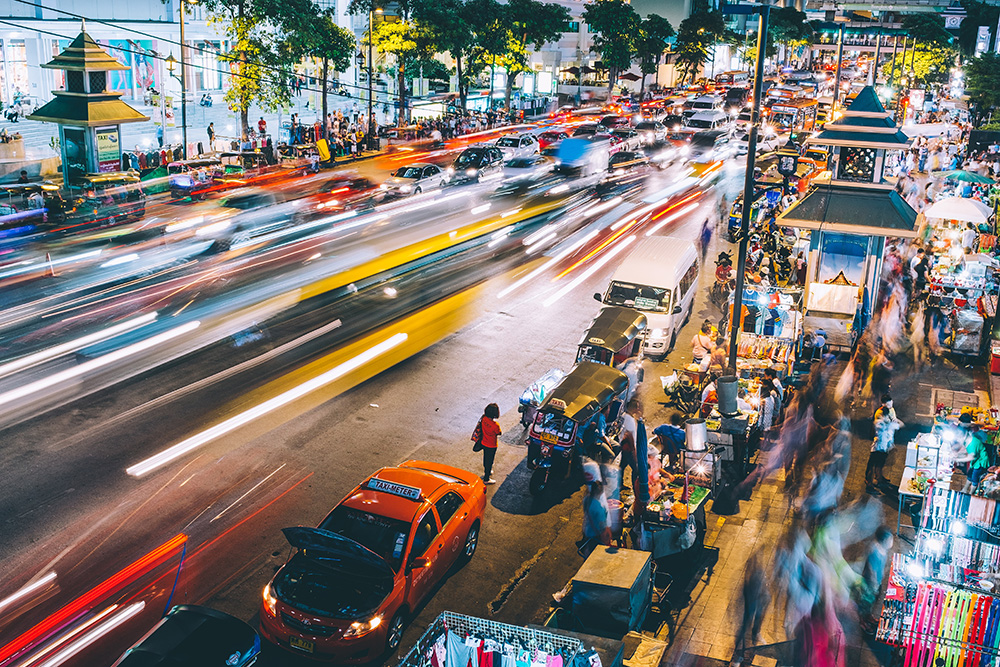
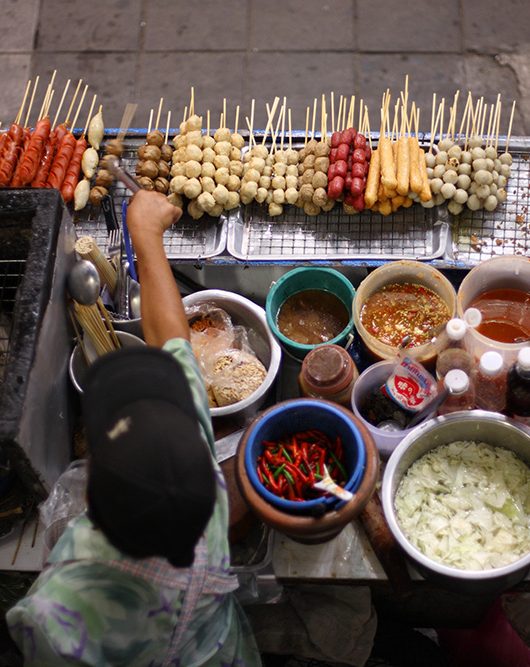
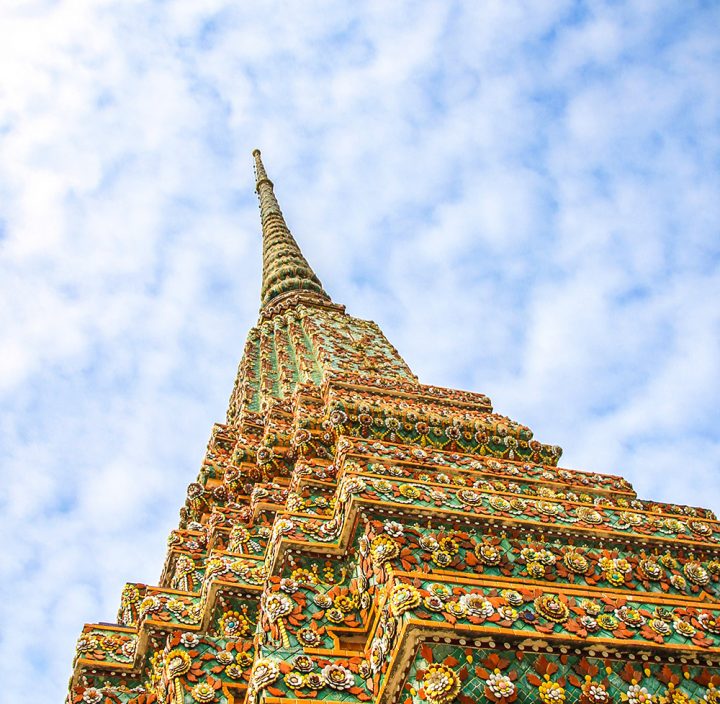
Bangkok’s Grand Palaces make for a great first stop. The palatial grounds in Bangkok were long the nerve center of the Siamese kingdom. The vast complex is full of throne halls, royal residences, and golden Buddhist temples, and nowadays most of the court and temples are open to visitors.
However, the Grand Palace and royal temple of Wat Phra Kaew can get very busy (in normal times), so consider an early morning visit.
For a great taste of the vibrant hustle-and-bustle of Bangkok, go to the Chinatown district and get lost in its maze of markets and narrow alleys. You’ll see fishmongers chopping fish, welders fixing equipment, and exotic foodstuffs for sale—all amid a sea of Thai and Chinese neon signage. It’s one of my favorite parts of Bangkok; check out our dedicated guide for the best areas to explore in Bangkok.
Tip: there is so much more to Bangkok than the tourist street of Khao San or the main commercial districts. Consider going on a longboat tour through the canals of hidden Bangkok, visiting non-touristy temples and some of the local markets. This was easily my favorite activity in Bangkok.
Kanchanaburi
Relaxing riverside base for nature and history
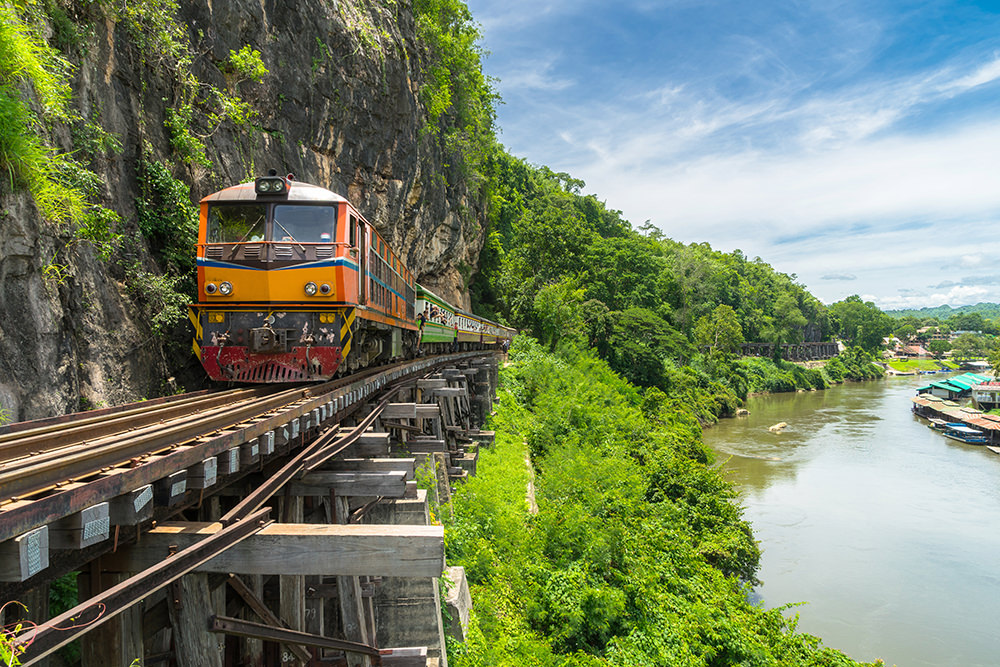
If Bangkok feels a bit much, then Kanchanaburi is the perfect place to unwind. This gentle riverside town is about two hours from the capital.
The town is famous for its railway, once built in 1943 by the Japanese during WW2. At the local museum, you can learn more about why it earned the nickname of the ‘Death Railway’. Despite its dark past, today the railway makes for an enjoyable ride passing cliffs along the river and crossing the famous Bridge Over the River Kwai.
Kanchanaburi is a chilled-out town with a small traveler scene. Relax by the river, stroll the local food markets, or rent bicycles to explore the tranquil countryside.
Consider taking a tour to nearby Erawan National Park, one of Thailand’s best-protected nature areas and home to gorgeous waterfalls. For more ideas, take a look at these 33 things to do in Kanchanaburi.
Ayutthaya
Ancient Thai capital near Bangkok
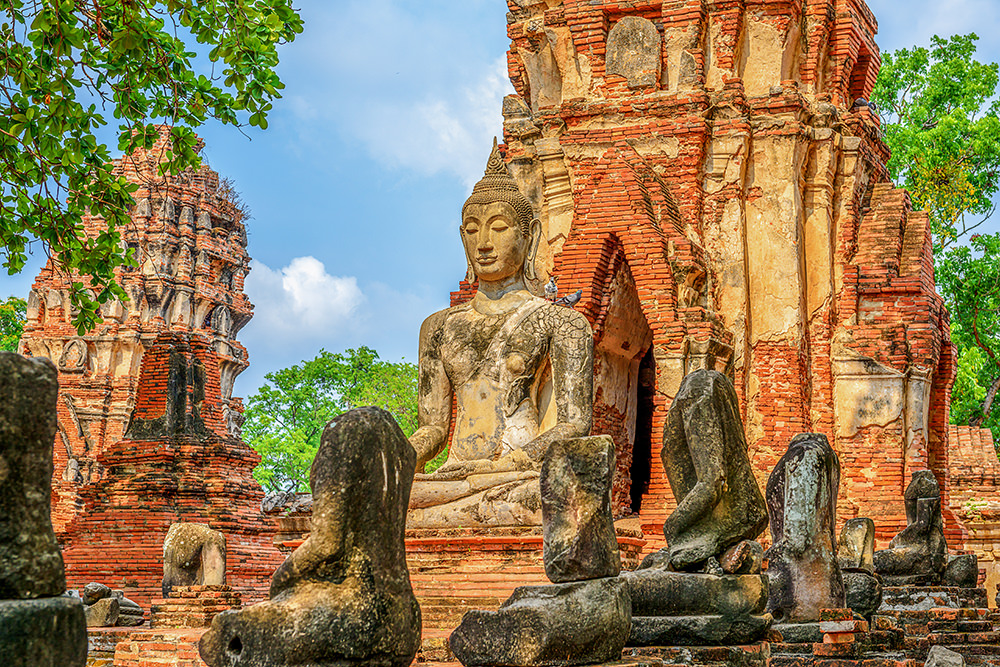
Founded in 1350, Ayutthaya was once the second capital of the Siamese Kingdom (after Sukhothai). The historic city of Ayutthaya is now a UNESCO-recognized site that encompasses many ruined ancient temples and palaces.
Ayutthaya has become a popular day trip from Bangkok and so it gets busy in the afternoons. However, as this blog shows, it can also be a great place to stay a night or two.
Lopburi
A town taken over by monkeys
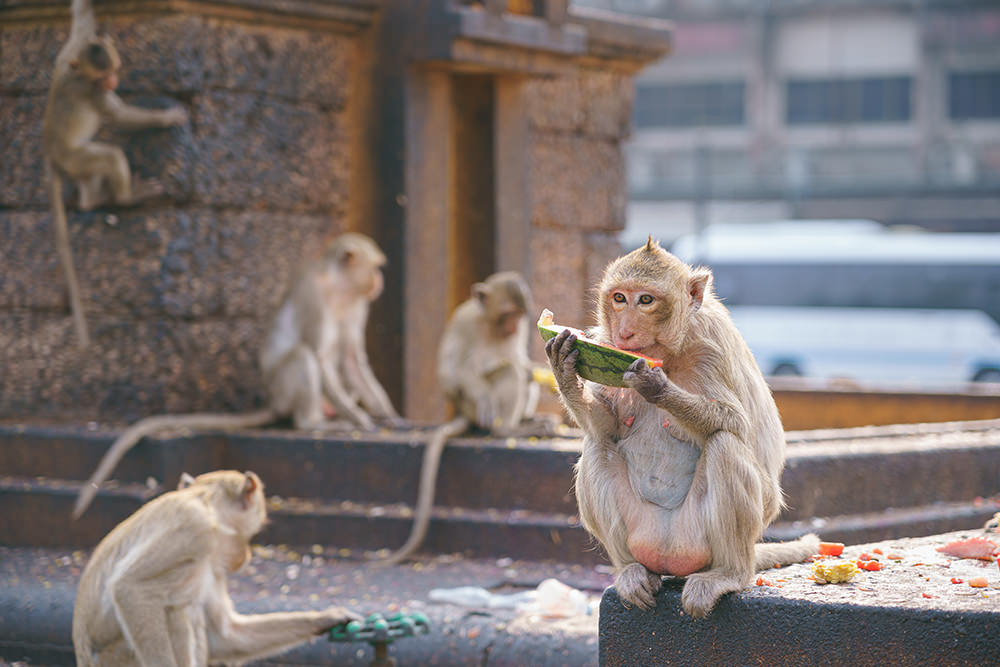
Lopburi is a historic city about 2 hours from Bangkok. It gained notoriety in recent years for the ever-growing colony of macaques that has overrun the town.
They are based out of an abandoned cinema but can usually be seen roaming around the Prang Sam Yot temple in the old town. They are a fun attraction but beware: they can be a little aggressive!
Besides the monkeys and several Khmer-style temples, there arguably isn’t that much else to do in Lopburi, so most people visit only on a stopover on their journey from Bangkok to the northern capital of Chiang Mai. Some stay the night in order to enjoy a bit of a real Thai city, while using it as a base for a day trip to Ayutthaya, or to explore the nearby countryside which is covered in sunflowers from November to January.
Koh Chang Archipelago
Oft-overlooked islands near Cambodia
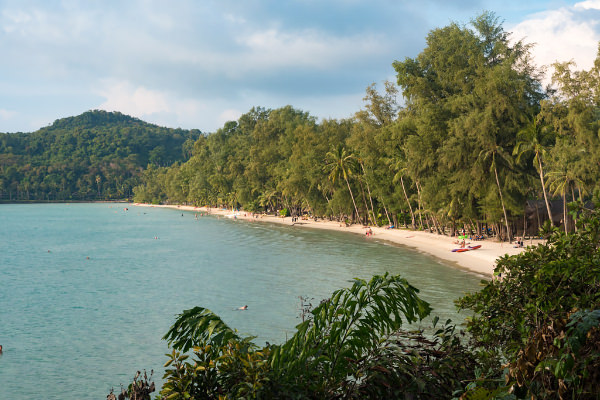
Most people go to Thailand’s southern islands, like the ones mentioned later. But Thailand also has a third island group in the center off to the east, near Cambodia. Depending on your itinary, the Koh Chang Archipelago may be a bit out of the way, but that’s also part of what makes it rewarding to visit.
Koh Chang, the largest island, gets its share of resort tourism, though it also has a thriving backpacker scene. Not all of the beaches are sandy (some have rocks or pebbles) and the island’s large interior is mountainous and covered in jungle, which can make it still feel a little wild. There are plenty of quiet spots, and it’s a perfect island for hiking.
Koh Kood (a.k.a Koh Kut) is very picturesque and unspoiled. It’s mostly the domain of some isolated resorts, but it’s also possible to be an independent traveler on Koh Kood and stay in a local B&B or guesthouse. This very quiet island is best for doing nothing at all. Ferries to the islands depart from the town of Trat, which is about 5 hours by bus from Bangkok.
Northern Thailand
This part of Thailand is more mountainous, has cooler temperatures, and is more relaxed. With its misty mountains and lush valleys, the region is popular for jungle trekking and visiting indigenous hill tribes.
The main city Chiang Mai has super low prices and an easygoing atmosphere, making it a great base from which to explore. The province also has some small mountain towns where you can kick back and relax, such as Pai or Chiang Dao.
Northwest of Chiang Mai is the Mae Hong Son province, Thailand’s least populous region. For a great road trip, you can rent some scooters and ride the Mea Hong Son loop through these tranquil backwaters of Thailand.
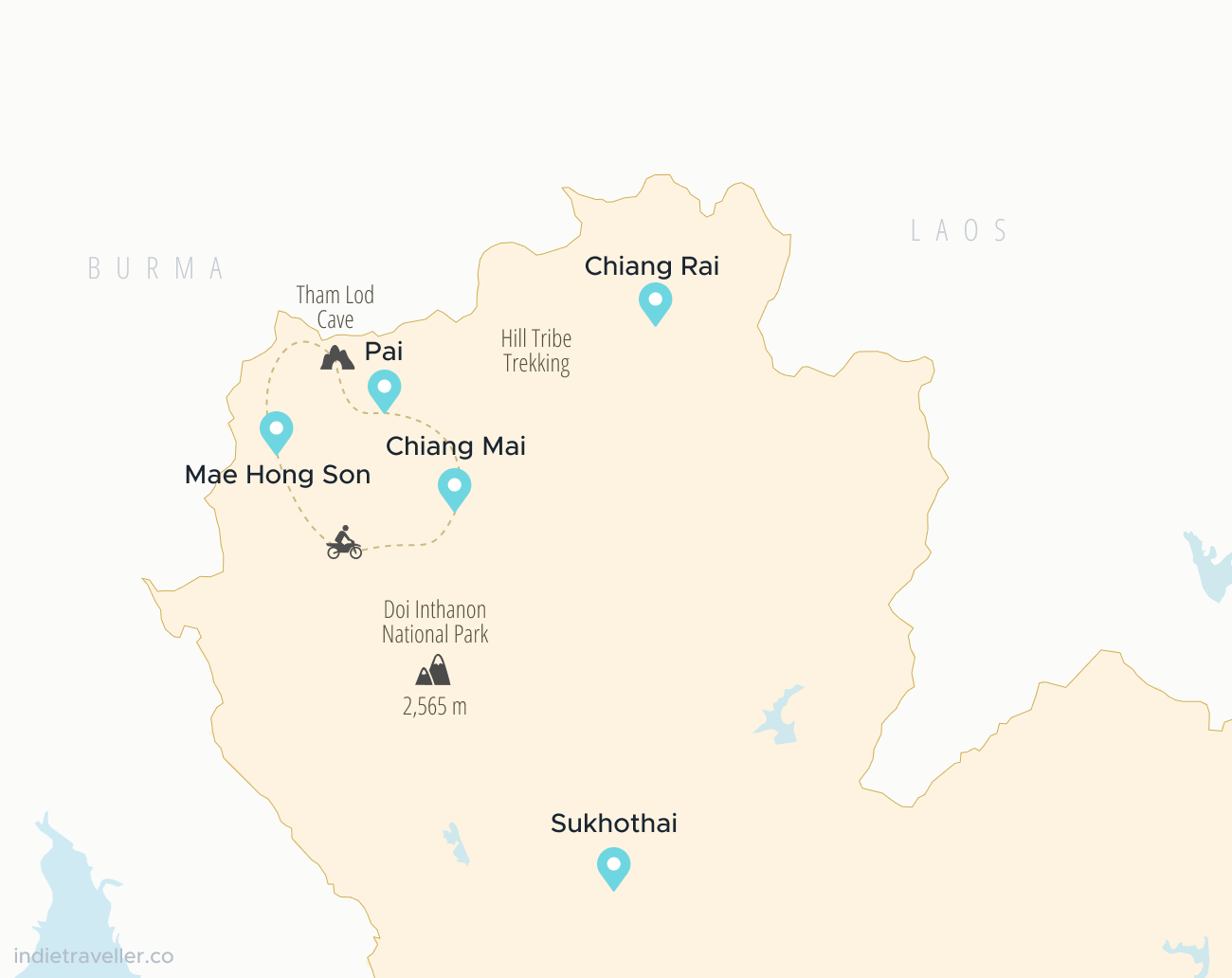
Chiang Mai
Largest city and cultural hub in northern Thailand
Chiang Mai is the gateway to northern Thailand, a city with a population of over 1 million (in the metropolitan area) but with a pleasant and calm atmosphere.
If Bangkok was a bit much, arriving in the comparatively green and quiet Chiang Mai can be a literal breath of fresh air.
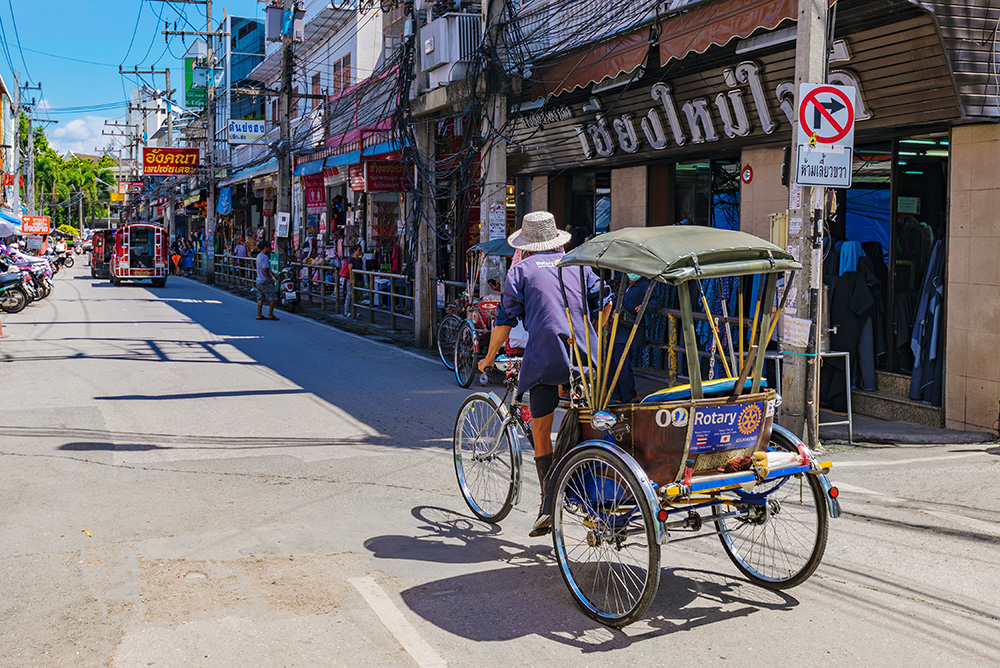
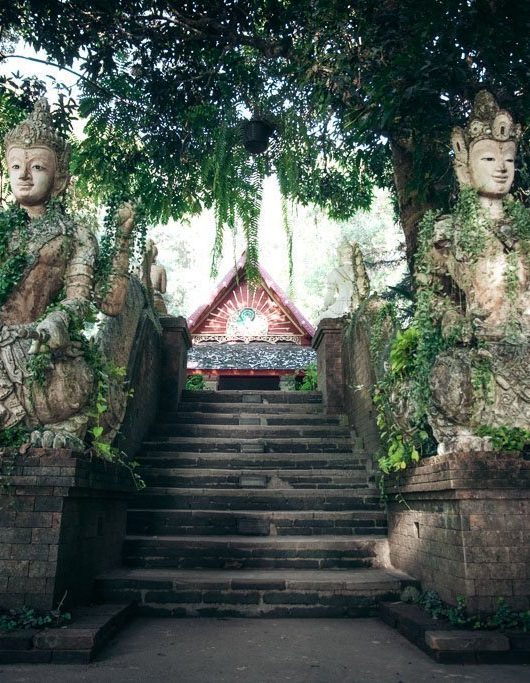
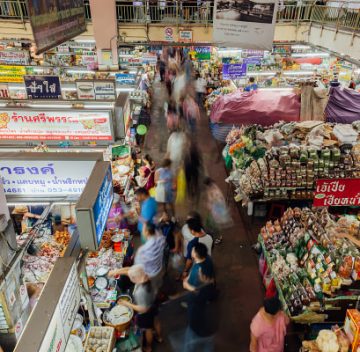
It’s a city with many interesting things to do, so you may wish to spend at least 2 or 3 nights there, though plenty of visitors stay longer. Besides the many temples, food markets, and other attractions within the city, Chiang Mai also makes for a great base for heading into the surrounding mountains and countryside.
Popular trips include jungle trekking, ziplining, Thai cooking classes, and cruising down the Mae Ping river in a small wooden boat, stopping by small riverside villages with traditional teak houses.
As one of the cheapest developed cities in the world, Chiang Mai is popular with tourists but also expats and digital nomads staying for months at a time. This lends the city a certain cosmopolitan feel, despite being a provincial capital.
If you’ve come to Thailand for the culture and nature, then Chiang Mai will be the perfect launching pad for exploring the north.
Sukhothai
The ruined capital of the Sukhothai Kingdom
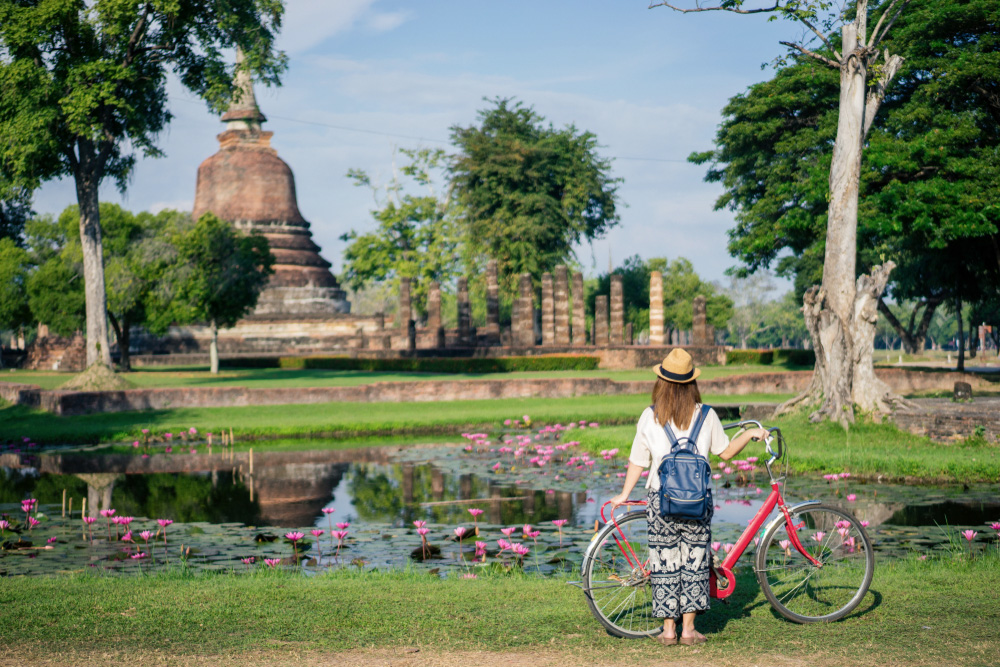
Sukhothai is a small city in the center of Thailand, roughly halfway between Bangkok and Chiang Mai. Its main attraction is the ruins of the ancient city Sukhothai, once the capital of the Sukhothai Kingdom in the 13th century and now a UNESCO World Heritage Site.
What makes this site different from Ayutthaya is that the ruins are spread over a very large area — a total of 70 km² (~27 square miles) — making it feel much less crowded. The perfect way to explore the historical park is to rent a bicycle.
Pai
Hippie-like town in a picturesque valley
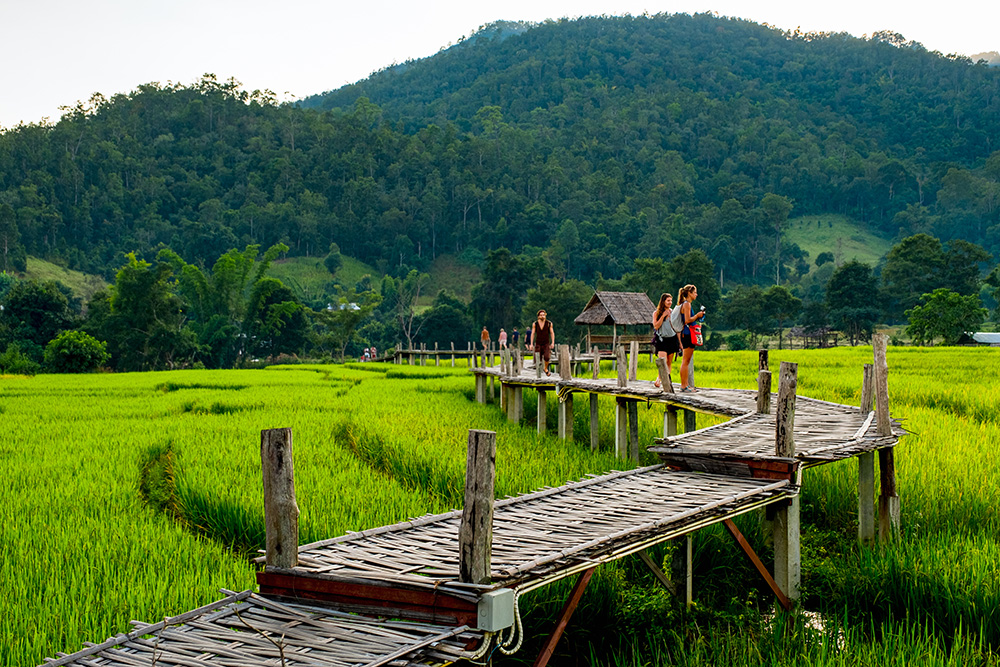
Pai is a small town (population 3,000) about a 3-hour drive from Chiang Mai. Once a hippie hangout, it gradually evolved into a laidback tourist town filled with bars, tattoo parlors, hostels, and all manner of restaurants — serving anything from traditional Thai to Mexican wraps and açaí bowls.
Some say that Pai isn’t very Thai. I mean, that’s a fair point. Off the beaten track it definitely isn’t and most businesses are there for tourists.
But it’s best to simply enjoy Pai for what it is and settle in one of the backpacker hostels or cute bamboo cottages by the river. Although it can get busy during high season (Oct-Feb) it maintains a gentle character thanks to its small-scale development. Its scenic location among rice fields and jungle-clad mountains lends itself well to exploring by bicycle or scooter, visiting nearby hot springs and waterfalls.
Our contributor Jade spent several months living in Pai and wrote this useful guide to the best places to stay, eat, and the best things to do.
Chiang Rai
Northern city on the way to Laos
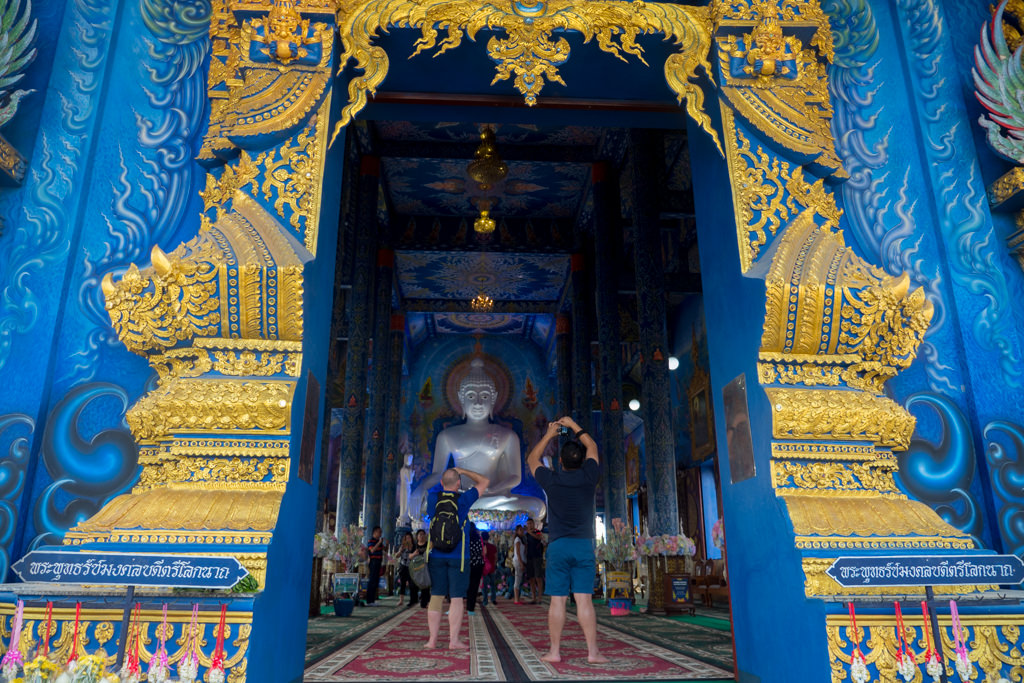
Chiang Rai is a city about a fifth the size of Chiang Mai, located near Thailand’s northern borders with Laos and Myanmar.
While it was once a little off the beaten path, new flight connections to Chiang Rai have unlocked tourism to this city. Several unusual contemporary Buddhist temples make for the main attractions. There are also some gentler attractions in Chiang Rai, such as the mountaintop town of Mae Salong, or hill tribe treks into the nearby national parks.
If you have limited time and you’re not sure where to go in Thailand, then maybe you’ll want to focus on Chiang Mai first. But if you want to see more in the north, or you are on your way to Laos, then Chiang Rai makes for a perfect stopover.
Chiang Dao
A quaint town off the beaten path
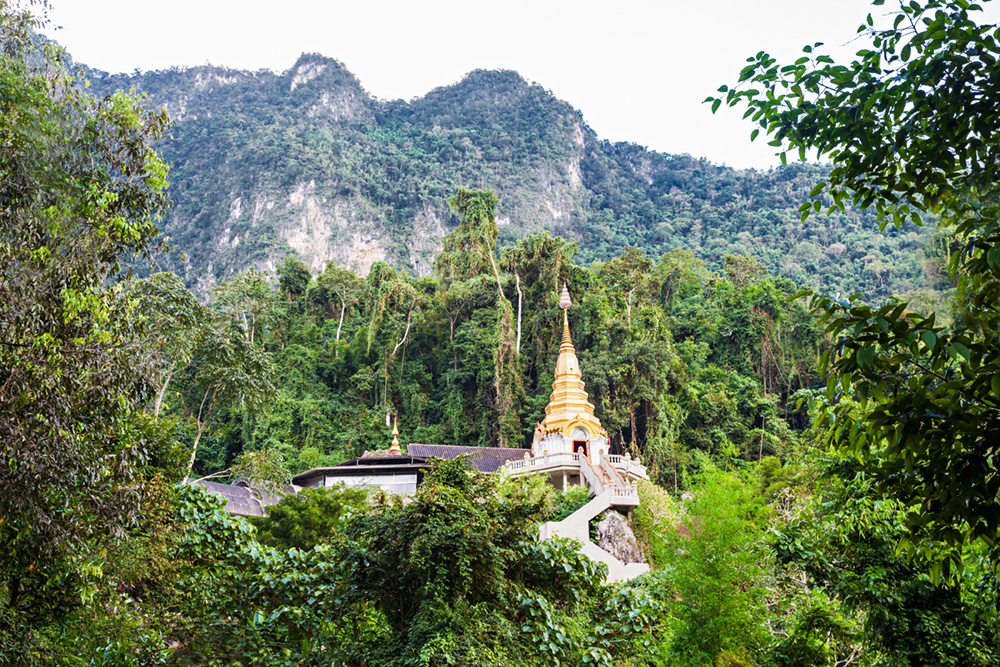
If a town like Pai feels too touristy, then something like Chiang Dao might be more your jam.
It’s not the biggest or best at anything, which happily keeps the masses away, but with its cute bungalows, green hills, and small temples and caves, it’s a delightful slice of rural Thailand. If you’re looking for a more authentically Thai town to stay, then this is it.
Our guide to Chiang Dao will tell you much more.
Mae Hong Son
Remote province perfect for a road trip
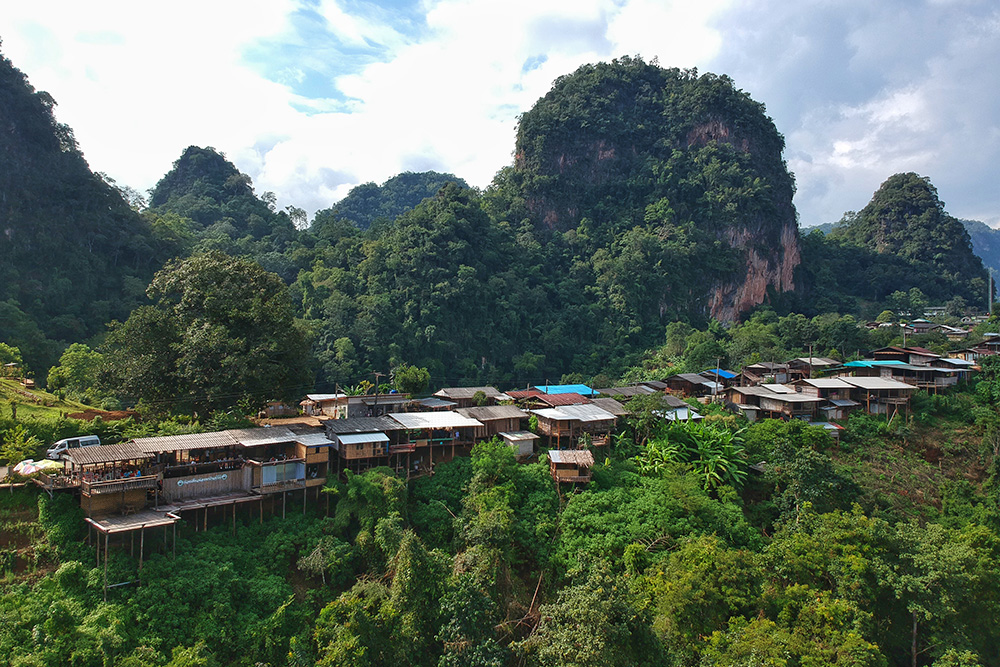
The northwest province of Mae Hong Son is one of Thailand’s least populated and most ethnically diverse.
The best way to explore it is to rent a scooter or motorbike in Chiang Mai, typically costing under $10 per day, then riding all your way around the Mae Hong Son Loop, which takes about 4 days minimum.
Several places make for ideal stopovers, including the tourist town of Pai described earlier, as well as Thai towns such as Mae Rim, Mae Taeng, and Mae Sot. Along the way, you can visit numerous temples, stay at an ethical elephant sanctuary, and explore the epic cave of Tham Lod (don’t miss the sunset spectacle of thousands of swifts flying into the cave entrance!).
The town of Mae Hong Son, with its mountain lake and breathtaking views, really is a jewel. Along with the local northern Thai, peoples from various minorities reside here or close by. Shan, Karen, and Hmong can all be found here and are easily distinguished because of their looks and traditional dress.
The Mae Hong Son Loop is perfect for those looking for a deeper exploration of Thailand, or just to stay in gentle riverside towns and gently falling asleep to the sounds of the jungle.
Southern Thailand
The south of Thailand is all about the beaches and islands. There is seemingly an island for every type of traveler, whether you are looking for comfort and luxury, or to swing in a hammock in a reggae bar, it’s all there.
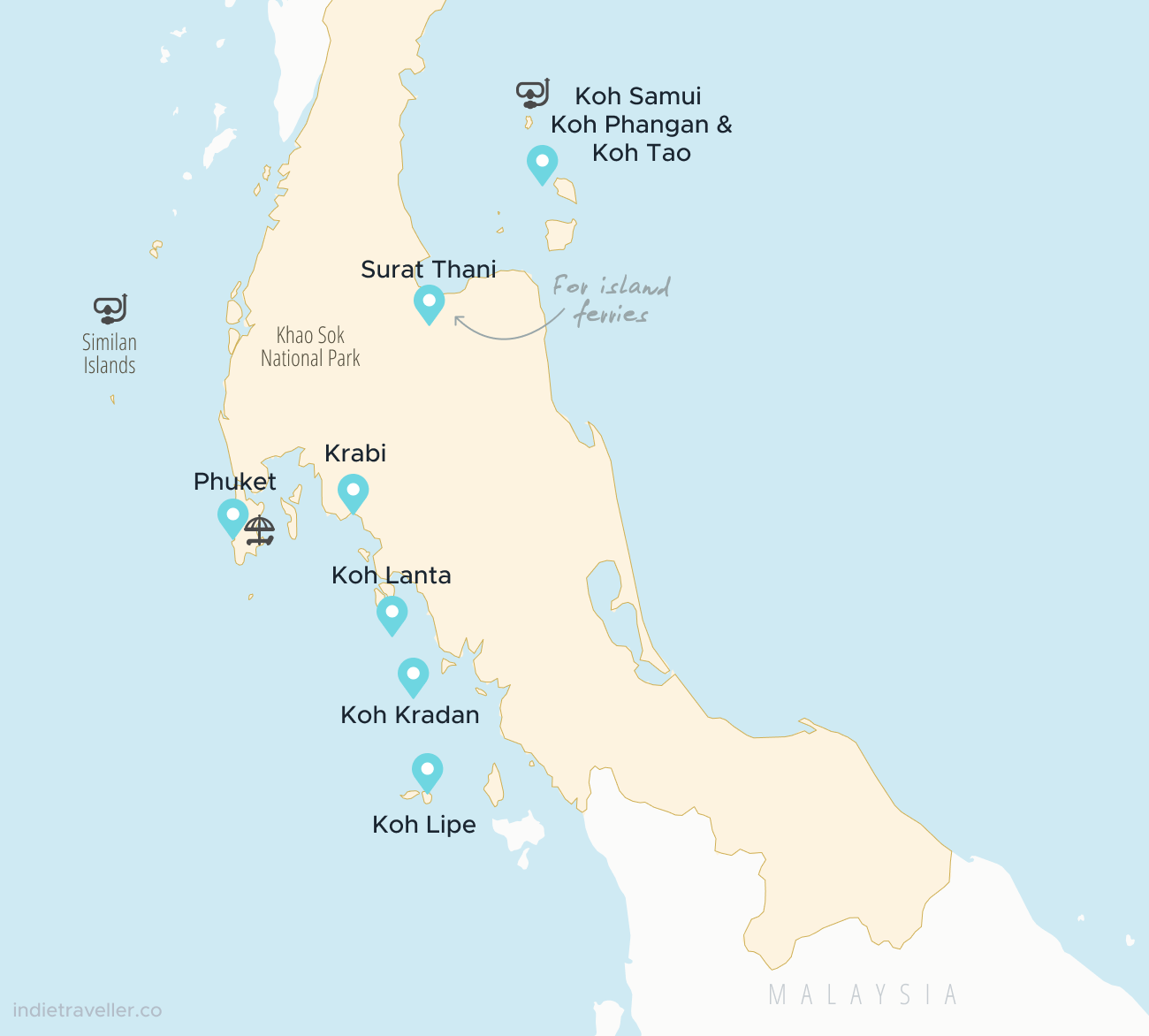
The west coast along the Andaman Sea has some of the most developed resorts in Thailand, with Phuket focused mainly on sun-seeking package holidays. Phuket (and the city of Patong) maybe aren’t the most exciting places to be for an independent traveler. Tourism there is rather massive-scale, though it is convenient if you’re just looking for a lazy well-catered beach holiday. Since it’s such a large island, you can always find some nice beaches.
Still, if you’re traveling around Thailand instead of on a resort holiday in a fixed location, then the coast of Krabi and Khao Sok National Park are better places to visit in the south — as do the islands of Koh Lanta, Koh Lipe or Koh Kradan, which are perfect for island-hopping.
The east coast of Thailand has fewer islands, but thanks to a shorter monsoon they can be enjoyed almost year-round. Koh Samui has its own airport and is mainly home to upmarket holiday resorts. Koh Phangan and Koh Tao are more popular with backpackers, digital nomads, and scuba divers.
Pro tip: the word ‘Koh’ means island in Thai. It’s pronounced like in the first part of ‘copy’, not as in ‘coworker’.
Krabi
Southern coast famed for its limestone cliffs
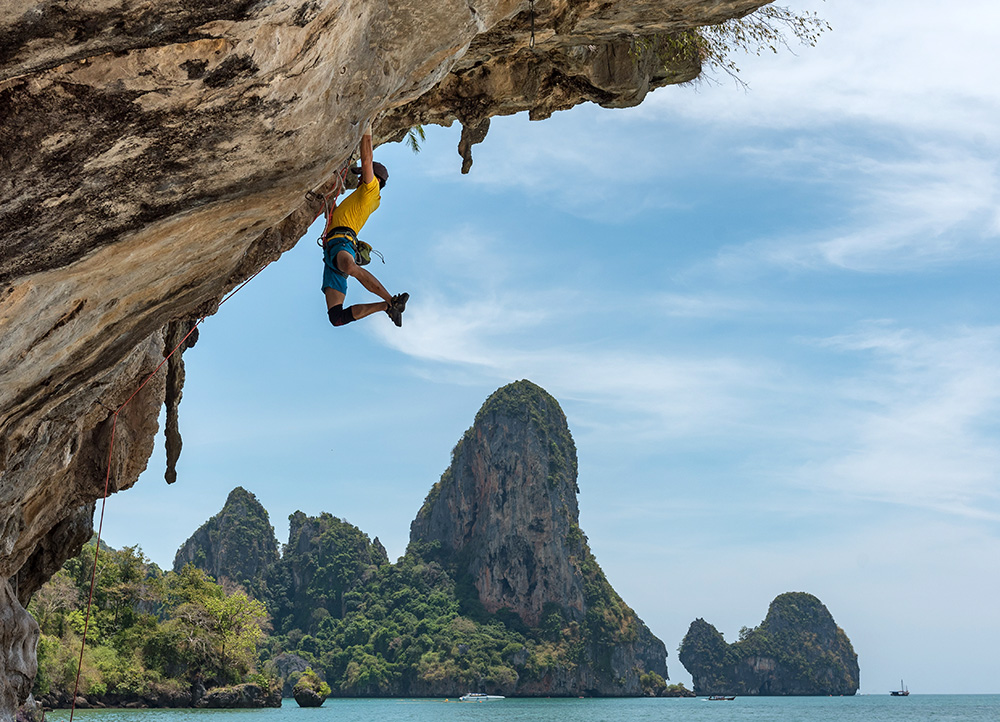
The province of Krabi is famed for its beaches fringed by tall karst cliffs. Some of the most iconic of these are Ao Nang beach and the beaches of Railay (or Rai Leh), a peninsula reached only by longtail boat from Ao Nang.
The beach of Railay itself has only high-end resorts, but you can still find some medium-budget options if you look well enough. Since Railay beach is getting increasingly busy, consider staying in Ao Nang or Krabi (where there is more space and more accommodation) and taking a day-trip to Railay.
The scenery is impressive and worth seeing despite the crowds — be sure to climb up to the lagoon and viewpoint. The area is also world-famous for its rock climbing, with introductory courses and equipment rental available in Railey, Ao Nang or Krabi Town.
Khao Sok National Park
Lakes and jungles filled with impressive limestone peaks
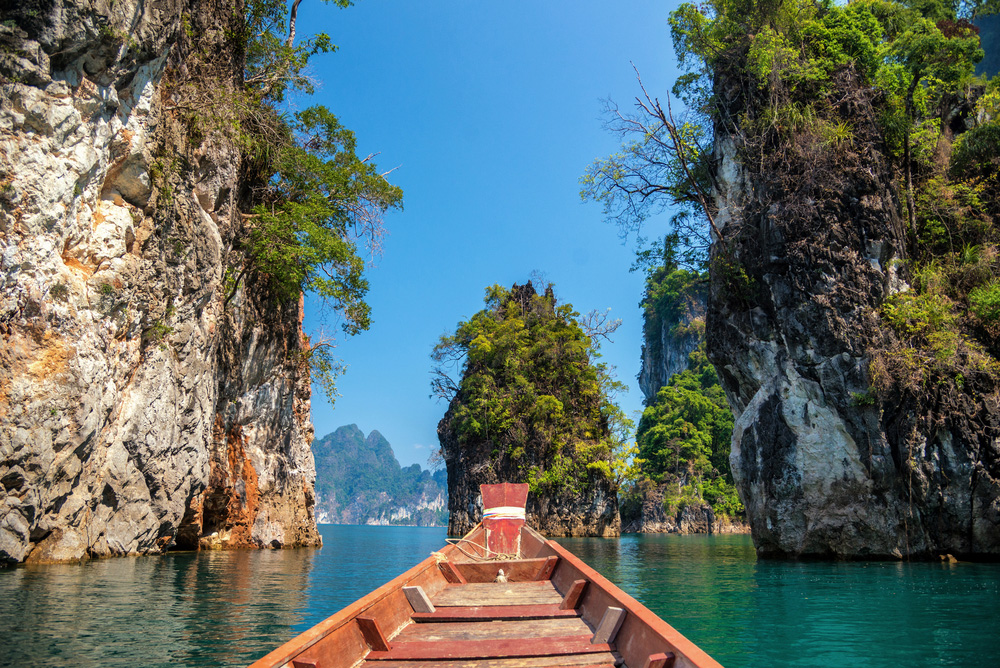
Khao Sok is a wildlife reserve in the south and easily one of the best places to see in Thailand.
It’s a spectacular park, featuring lakes with floating bamboo houses, and limestone karst often rising from the jungles. Spending some time here on a 2-day (or longer) excursion is a great way to add some adventure to what will inevitably be a very beaches-and-islands focused part of your trip to the south.
There are several trails from Khao Sok village that you can walk independently, though most of them technically require a guide. Organized tours are a little easier in practice and often include additional activities such as kayaking, bamboo rafting, caving, ziplining, wildlife spotting, or overnighting in the jungle. You can easily book tours from most guesthouses and locations in Krabi.
Thailand’s Gulf Islands
Koh Samui, Koh Tao & Koh Phangan
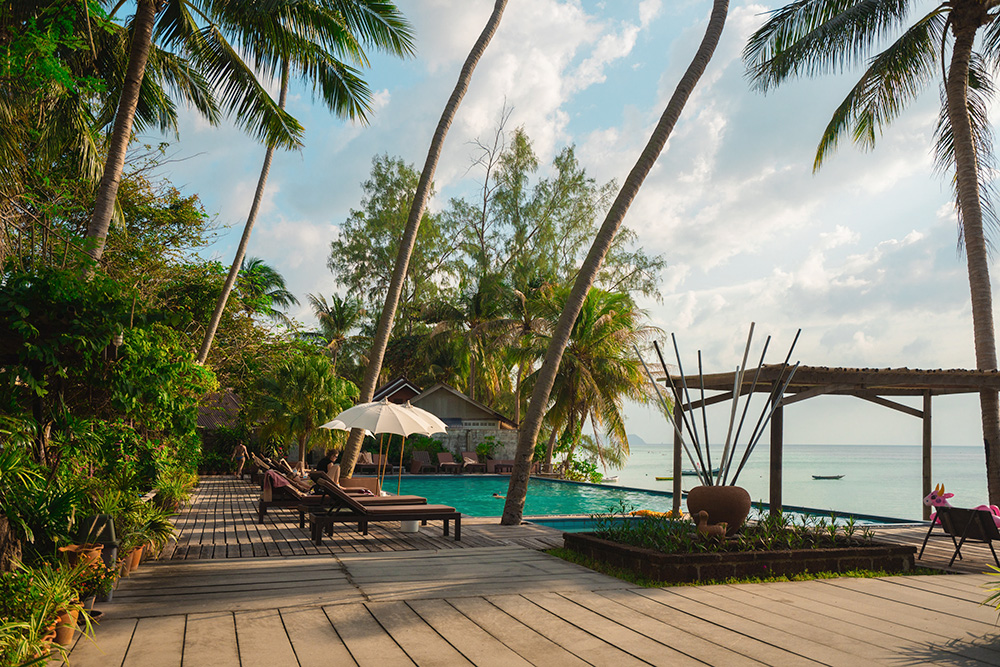
A trio of islands sit in the Thai Gulf, each with a different character. Ferries from Surat Thani can take you to each of the islands.
Koh Samui is the largest of the three and has its own airport. Backpackers often consider this island ‘dull’ or ‘too expensive’, though it’s the best place for finding upscale resorts, luxury hotels, and clean beaches. Many of those who come to Thailand for a resort experience rate Koh Samui higher than the more mass-market oriented Phuket.
Koh Phangan tends to get pigeon-holed as a party island because once a month it is host to Full Moon Party, which once began as a psychedelic hippie beach bonfire but since grew into a massive event attracting tens of thousands of revellers. It’s a classic on the Thailand backpacker circuit, but the festival area of Haad Rin represents just a tiny slice of the island. Go west or north and you’ll find some of the best Thai beaches and small-scale resorts and beach bungalows.
Koh Tao meanwhile hosts the largest concentration of scuba diving schools in Asia (and quite possibly the world), with high competition resulting in unbeatable prices. If you ever wanted to become a certified SCUBA diver, it’s one of the most convenient places to do it. The reefs aren’t the best if you’re already an experienced diver, but beginners can see many fishes, rays, and sea turtles in calm waters.
Thailand’s Western Islands
Koh Lanta, Koh Phi Phi & Many More
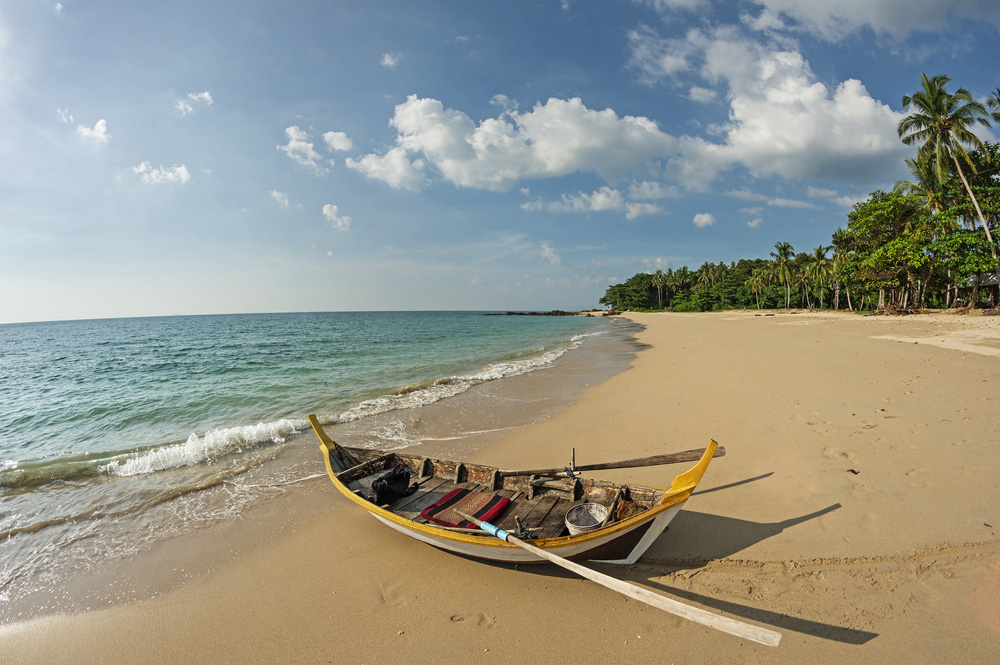
The Western islands have been less visited by yours truly, though one highlight is surely the island of Koh Lanta. It has a mix of family-friendly beaches, scuba diving resorts, and a few social backpacker spots. If you’re looking for a larger island that has lots to offer but doesn’t get too crazy, then Koh Lanta is a great choice.
The island of Phi Phi is objectively stunning but arguably became a victim of its own success, with its crass party scene and over-commercialized development. Some people say I’m being unfair to Phi Phi, so you should make up your own mind, but it’s telling that the island has disappeared from influential travel guides’ top 10 lists in recent years. The nearby Maya Bay had to be closed in 2019 due to overtourism.
Luckily there are numerous other islands on the Western coast, including Koh Phayam, Koh Similan, Koh Kradan, Koh Lipe, and many others.
Some links may be affiliate links, meaning I may earn commission from products or services I recommend. For more, see site policies.















![Toni Kroos là ai? [ sự thật về tiểu sử đầy đủ Toni Kroos ]](https://evbn.org/wp-content/uploads/New-Project-6635-1671934592.jpg)


